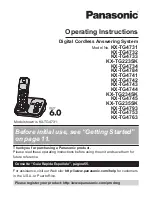
79
Glossary
I
IEEE
Institute of Electrical and Electronics Engineers
International body that defines standards in electronics and electrotechnol-
ogy, concerned in particular with the standardization of LAN technology,
transmission protocols, data transfer rate, and wiring.
Infrastructure network
Network with central structure: all
communicate via
a central
Instant messaging
Service that uses a client program to allow chatting in real time, i.e., to send
brief messages to other subscribers on the Internet.
Internet
Global
. A series of protocols have been defined for exchanging data,
are identifiable via their
assigns
a
to the
Important services on the Internet include the World Wide Web (WWW),
e-mail, file transfer, and discussion forums.
Internet Service Provider
Enables access to the Internet for a fee.
IP (Internet Protocol)
TCP/IP protocol on the
. IP is responsible for addressing subscribers
and routes data from the sender to the
recipient. IP determines the paths (routing) along which the data packets
travel.
IP address
A unique address for a network component within a network based on the
TCP/IP protocols (e.g., LAN, Internet). On the
, domain names are
usually assigned instead of IP addresses.
IP address to the domain name.
The IP address has four parts (decimal numbers between 0 and 255)
separated by dots (e.g., 230.94.233.2).
The IP address is made up of the network number and the number of the
(e.g., phone). Depending on the
, the
front one, two or three parts make up the network number and the rest of
the IP address addresses the network component. The network number of
all the components in any one network must be identical.
IP addresses can be assigned automatically with DHCP (dynamic
IP addresses) or manually (static IP addresses).
See also:
.
IP pool range
Range of IP addresses that the DHCP server can use to assign dynamic
IP addresses.












































